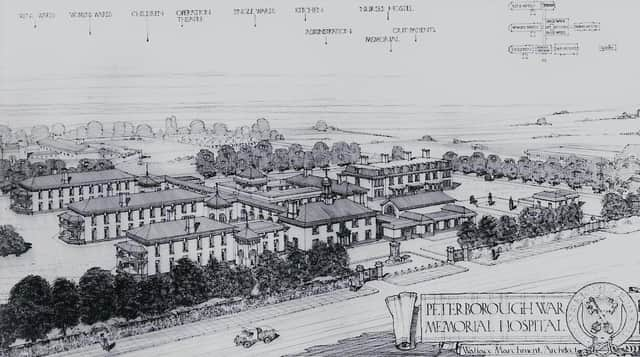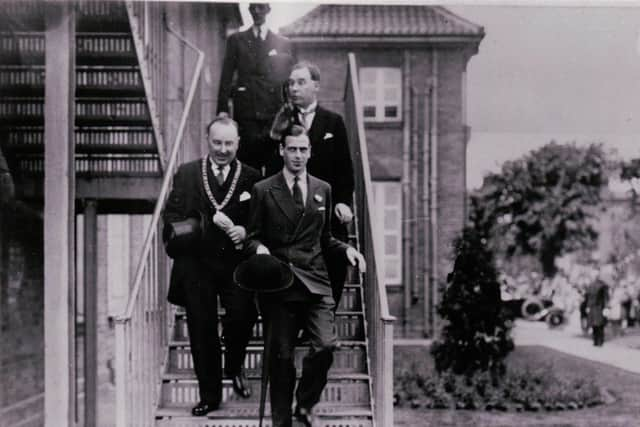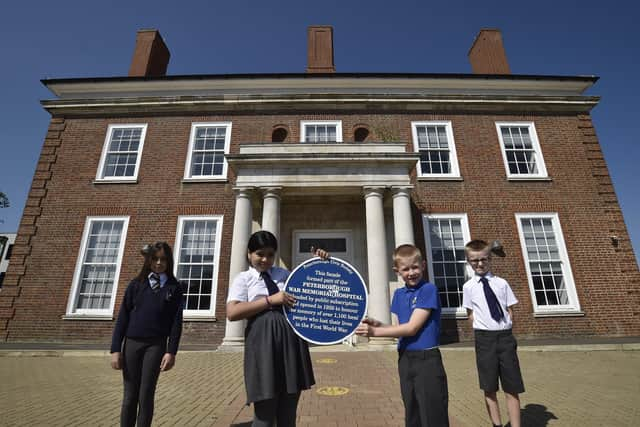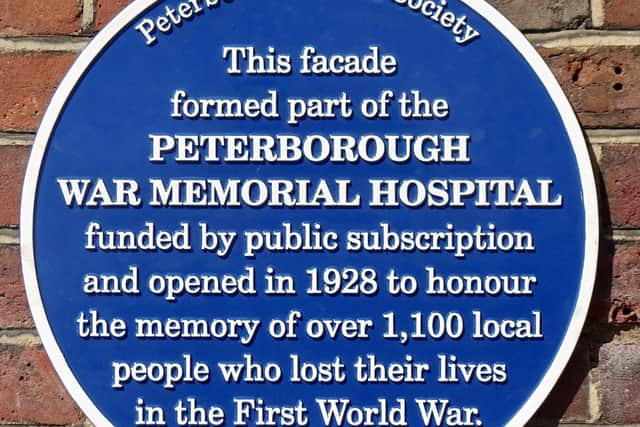LOOKING BACK: Peterborough’s fitting tribute to the fallen of the Great War


This plaque is located to the left of the Midland Road entrance of West Town Primary Academy.
After the First World War, all over the country people were deciding how to commemorate those lost in the ‘Great War’.
Advertisement
Hide AdAdvertisement
Hide AdMany places commissioned war memorials in the style of the old village crosses, others built memorial halls or other facilities for their communities. Larger towns were more ambitious and several, including Peterborough, decided to raise funds for the building of a hospital as a fitting War Memorial.


For about 70 years, Peterborough’s Infirmary was housed in what is now the museum in Priestgate. Its capacity was 65 beds and Peterborough Hospital district now extended to Bourne in the north, Kings Cliffe in the west, Ramsey in the east and Thrapston to the south. That population, of about 100,000, required at least a doubling of available beds.
Once the idea had been launched in 1919 by the then Mayor, nine years of planning and fund-raising began. with Architect, Mr Wallace Marchment, was selected by open competition.
An eye-watering target of £80,000 was set (about £4.2 million in today’s money). However the slump slowed progress until a 4 ½ acre site was donated by Alderman Bunting. In 1921 a Hospital Quota Campaign was launched.
Advertisement
Hide AdAdvertisement
Hide AdEach of Peterborough’s four urban wards and about one hundred smaller towns and villages in the hospital district was issued with a target to be achieved in five years.


The most usual target was around 10 shillings per head of population but some areas were given lower targets, because they were either less well off, or more distant from Peterborough with access to other hospitals.
Donations also came from the Peterborough Hospital Saturday Fund, the Red Cross and from major landowners, businesses, churches and individuals. Equipment, blankets etc were also donated.
The foundation stone was laid by Mr Fitzwilliam of Milton Hall on July 31, 1925 with much acclaim. But, in fact, by this time only £47,000 of the £80,000 had been raised or promised, so the stone laying was as much a clarion call for more donations.
Advertisement
Hide AdAdvertisement
Hide AdThe ceremonial opening of the new hospital took place on June 14, 1928. Yet funds were still £9,000 short of the target and the children’s ward only just started.


complete building contained admin block (the façade of which is the sole retained feature of the building), outpatients block, two women’s wards (44 beds), kitchen block, two male wards (44 beds) a ‘spare’ 14 bed ward, eight private beds, operating block with one theatre, nurses’ home, laundry and mortuary.
The 15-bed children’s ward, opening a year later, formed the last of the three two-storey wings with their sun-balconies facing south over Thorpe Road.
lThe new series of plaques augments the 20 existing plaques in the city centre.
Advertisement
Hide AdAdvertisement
Hide AdFurther details about all the plaques can be found in the accompanying 28-page booklet which can be ordered on the society’s website at a price of £2 per copy (to cover postage and packing).
Once the Covid-19 lockdown restrictions are relaxed, copies of the booklet will be available to collect free of charge at the Town Hall and other outlets. A download of the booklet is available on the society’s website.
The plaques project has been supported by the National Lottery Heritage Fund and Peterborough City Council.